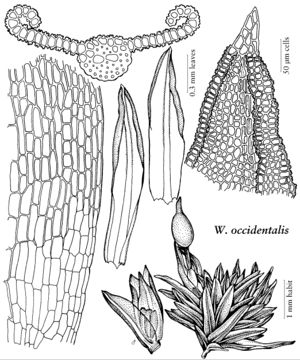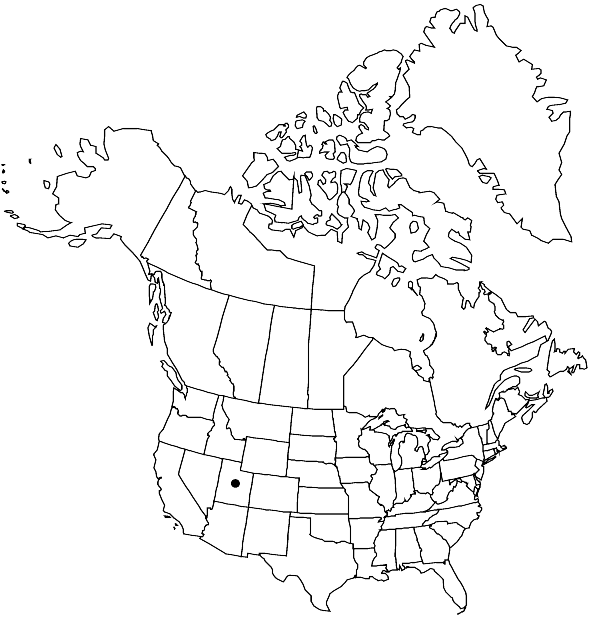Difference between revisions of "Weissia occidentalis"
Bryologist 88: 310. 1986,.
FNA>Volume Importer |
imported>Volume Importer |
||
| (2 intermediate revisions by 2 users not shown) | |||
| Line 47: | Line 47: | ||
|publication year= | |publication year= | ||
|special status= | |special status= | ||
| − | |source xml=https:// | + | |source xml=https://bitbucket.org/aafc-mbb/fna-data-curation/src/2e0870ddd59836b60bcf96646a41e87ea5a5943a/coarse_grained_fna_xml/V27/V27_739.xml |
|subfamily=Pottiaceae subfam. Trichostomoideae | |subfamily=Pottiaceae subfam. Trichostomoideae | ||
|genus=Weissia | |genus=Weissia | ||
Latest revision as of 21:28, 5 November 2020
Leaves short-lanceolate to elliptic, base weakly or not differentiated in shape, shoulders absent, distal laminal margins sharply incurved or inrolled, apex plane to channeled, acute, mucro usually weak, of 1–3 cells; costal adaxial stereid band smaller than the abaxial; distal laminal cells 7–10 µm wide. Sexual condition autoicous or paroicous. Seta elongate, 0.1–0.15 cm. Capsule cleistocarpic, short-elliptic, operculum not differentiated, peristome absent.
Elevation: High elevations (1800 m).
Discussion
Weissia occidentalis is known only from the type collection (Millard County, House Mountains, Swasey Gulch, 1800 m, Flowers 2339, COLO). It has the leaves typical of W. ligulifolia, these being long-elliptical and sharply incurved distally. Weissia inoperculata is superficially similar in its cleistocarpic capsule and elongate seta, but differs by the longer seta and leaves similar to those of Trichostomum brachydontium—stoutly mucronate, broadly elliptical and nearly plane throughout.
Selected References
None.

